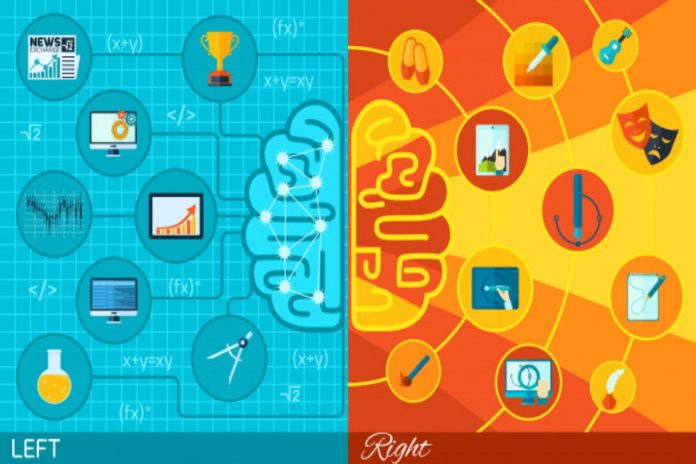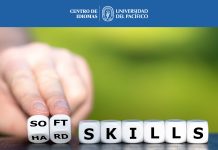Everything we learn, we learn it through our language and everything we know we reflect it and express it through our language. Then it may we valid to ask: is it logical to expect that people should learn a foreign tongue without using their own language in the process?
The idea that a foreign language must be taught and learned without resorting to the mother tongue to accomplish it is quite widespread. In fact, it has prevailed without major contention for a considerable period. But in recent times it has come under severe questioning. And there is not conclusive research to demonstrate that students who are only spoken in L2 (the target language) and are compelled not to use their L1 (native tongue) achieve better results in their learning than those who are subject to a rational combination of L1 and L2.
BABY THROWN OUT WITH THE BATH WATER
Let’s examine some of the reasons why this allergy of the native language developed in the foreign language classroom. In the first place, the Grammar Translation method used solely the native language as the vehicle of instruction. True. Not very efficient. To this, the Direct Method, called also Natural Method, counteracted refraining to use the learners’ native language and using only the target language. In general, it intended teaching focusing in the development of oral skills (sounds familiar?). To help in that aim, they resorted to teaching concepts and vocabulary through pantomiming, realia and other visual materials. Another characteristic was that students should be speaking 80% of the time during the lesson. It can be observed that the methods of today are then not that modern at all.
Audiolingualism became popular in the 60’s, practically as an offspring of the Direct Method, Structural linguistics and the Behaviorist theory in Psychology. In this method the teacher was just occasionally permitted to use L1 but students had to use exclusively L2.
After this method was discredited, in the 80’s and 90’s, the Communicative Approach began to exist. In the beginning the no L1 use norm in instruction was adopted, but in the long years that it has been in use, many prominent linguists have raised their voices questioning the across-the-board use of this practice.
The success of the immersion method was another factor that counted in the obliteration of L1. Schools that adopted the method of switching completely to the target language eventually showed remarkable success. It should be noticed that they were mostly boarding schools. Also there are many stories of students going to live for a period in a foreign speaking country and returning home fluent in that language. Many schools tried to recreate that, but the problem is that they couldn’t transport the institution to another environment.
DEVALUING OUR OWN LANGUAGE?
It is also worthy of reflection the attitude of the great editorial houses producing textbooks for language learning. These establishments have nowadays a decisive say in the way languages are taught. But their main concern is commercial. They actively support the idea of using only the target language. In this way they may produce books which they can sell all over the world, without any consideration to the local language.
Another point of view that supports this train of thought is Steve Krashen’s Input Theory. He says that the manner to learn another language is by being exposed to it. There’s no denial to this. But is it the only way?
The mother language is something that constitutes part of our personality, the way we are, the way we conceive the world, the manner we have assimilated our own culture. Goldstein (2003) discovered that in situations where students were not permitted to use their own language, even in private spaces, and punishments were applied for using the mother tongue, the results were that students refrained from speaking; when they did, they used their own tongue quietly and felt a sense of shame. He contended that “learning another language should add richness to students’ lives; it should not devalue their own language and culture.” She also points out that students should get the sense that learning another language is a positive experience because they can have access to a valuable resource that adds to their personal worth rather than a source of shame and suffering.
My language is me
One more thing to consider is that we have developed a lot of time and effort to learn the linguistic scaffold of our own language. Why shouldn’t we take advantage of this knowledge to compare and notice what is similar and what is different in the target language, to learn by parallelism and contrast? Why should we have to tread again the whole trail that we followed as children to learn our first language? Why not better use the knowledge we have of our own language as a springboard to learn another?
Of course, it is imperative to avoid an excessive dependence in the students’ mother tongue by both teacher and students because pupils would lose confidence of their ability to communicate in English. It is evident that using the L2 in class is essential to improve their language skills. (Harbord, 1992). Furthermore, it shouldn’t be forgotten that it is not possible to learn a language without becoming familiar with the culture that originates it.
wrapping up
In sum, absolute prohibition of L1 across the board in the foreign language classroom seems neither justified nor practical. Much more research about the subject needs to be done and the issue must be discussed further. Extreme decisions are rarely sustainable solutions.
References:
Atkinson, David. The mother tongue in the classroom: a neglected resource? http://eltj.oxfordjournals.org/content/41/4/241.abstract
Ferrer, Vincent. The mother tongue in the classroom: http://www.indabook.org/preview/qWQdAhAqs31iASH8qoykJ9v_c5Lm8MS6L_JUw6rhtcA,/THE-MOTHER-TONGUE-IN-THE-CLASSROOM-cross.html?query=Mother-Languages
Goldstein, Tara (2003) Teaching and Learning in a Multilingual School: Choices, Risks and Dilemmas. Mahwah, NJ: Lawrence Erlbaum Associates. http://tesl- ej.org/ej24/r11.HTML
Estimated reading time: 5 minutes, 0 seconds










